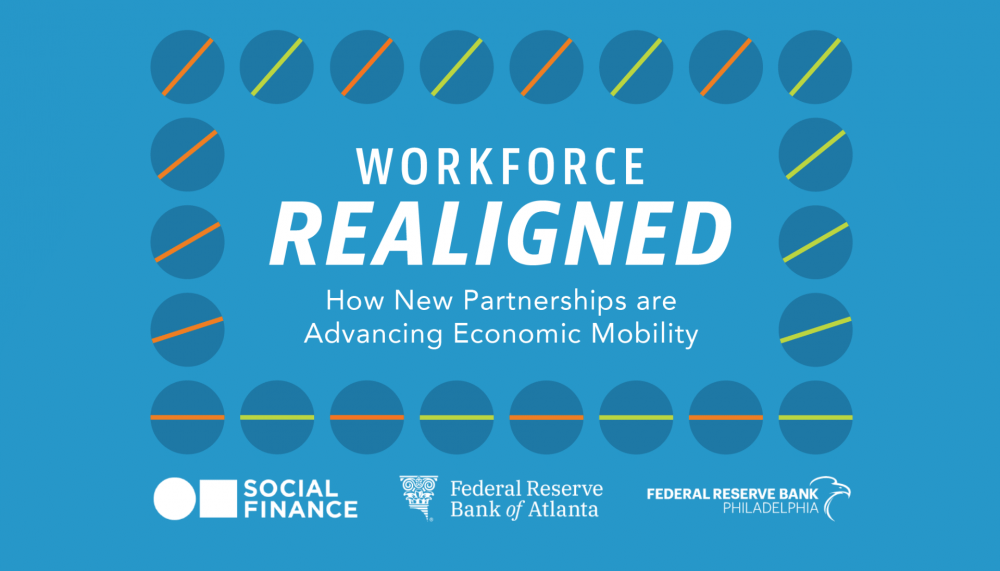

Public Sector Solutions, Workforce & Economic Mobility, Results-Based Funding
Key Takeaway
This historic piece of legislation gives us the opportunity to scale an industry that will power our economic future—and with some operational adjustments, public sector leaders can increase the likelihood that it delivers real impact.
$50B+
In investments to strengthen and expand the U.S. semiconductor industry
In October 2022, the Office of Advanced Manufacturing at the National Institutes for Science and Technology (NIST) issued requests for information (RFIs) related to two new microchip manufacturing programs established through the Creating Helpful Incentives to Produce Semiconductors (CHIPS) and Science Act.
President Biden signed CHIPS into law in August 2022. The bill earmarked more than $50 billion in manufacturing, research and development, and workforce development investments to strengthen and expand the U.S. semiconductor industry amid a global microchip shortage.
Based on our experience working with public sector partners and our commitment to equitable, inclusive economic growth, we responded to the NIST request by outlining several ways public sector leaders can strengthen the implementation of the CHIPS Incentives Program and the forthcoming Manufacturing USA Semiconductor Institutes, the pair of initiatives at the heart of the legislation.
Infusing resources into new workforce development funding models
A key challenge for the future of the semiconductor industry is filling middle skill jobs—roles that don’t require college degrees but do require some post-high-school training—and doing so with a focus on populations that have historically been underrepresented in the semiconductor industry. At the same time, jurisdictions across the country are grappling with how to achieve increasingly challenging workforce and economic development goals with overstretched public dollars and minimal private capital.
By allowing CHIPS financial assistance to be used in innovative workforce development funding models like Career Impact Bonds and Pay It Forward Funds, the federal government can help jurisdictions stretch their funds further, unlock more private and philanthropic capital, and ultimately build robust talent pipelines that meet industry needs.
Promoting diversity, equity, and inclusion through deep employer engagement
The semiconductor industry will need an additional 90,000 workers by 2025, per research from Eightfold.ai. This presents a unique opportunity to build the workforce in a way that is more diverse and inclusive. Although the semiconductor industry has made significant advancements in promoting diversity, equity, and inclusion (DEI) in recent years, more can be accomplished to ensure the sector is open to people of all backgrounds. Current efforts are geared toward reevaluating hiring practices to increase the diversity of the current talent pool. But the sector has the capacity to do more, such as reorienting training programs to provide career pathways for people experiencing systemic barriers to employment.
The federal government can help catalyze such developments via CHIPS by supporting employer and training provider collaborations that not only align with industry needs but also create positive employment outcomes for diverse workers. Incentivizing shifts toward skills-based recruiting and credential-agnostic hiring approaches can further this work and lay the groundwork for greater DEI within the semiconductor sector.
Removing unnecessary barriers to industry access
Almost all jobs in the semiconductor industry require specialized training, if not an advanced degree. These academic requirements often screen out people of color, as well as members of other historically marginalized groups, and training for middle-skill roles in the sector can be costly and difficult to access. In the end, this contributes to persistent opportunity gaps that all too often fall along racial and gender lines, resulting in talent challenges for the microchip manufacturing industry as a whole.
CHIPS stakeholders, most notably those involved in the development of the Manufacturing USA Semiconductor Institutes, can dramatically change the industry by welcoming, building, and supporting a new workforce that’s equitable from the outset. However, effort and good intent alone won’t ensure an inclusive and diverse talent pool. Industry leaders can proactively address these challenges by introducing new workforce development approaches that make it easier for prospective workers to get the training they need to succeed in and contribute to this critical aspect of American manufacturing.
Measuring the effectiveness of CHIPS to contextualize past outcomes and inform future results
Data is essential to understanding performance for learning and accountability and creating real-time feedback loops that drive continuous improvement. The federal government can harness the power of data to ensure that CHIPS achieves macro- and micro-level impact. By tracking industry development and income data for workers navigating the developing industry, CHIPS stakeholders can measure progress at every scale and make programmatic course corrections. Additional quantitative data, including interviews and focus groups with workers, program staff, and employers, can provide additional dimension and help capture the true, measurable impact of CHIPS.
This historic piece of legislation gives us the opportunity to scale an industry that will power our economic future—and with some operational adjustments, public sector leaders can increase the likelihood that it delivers real impact.
Learn more about our Public Sector Solutions →
Related Insight

The Treasury is About to Release $50 Million in Social Impact Partnerships to Pay for Results Act Funding
The awards are part of Treasury's Social Impact Partnerships to Pay for Results Act (SIPPRA) program.

Social Finance in The New York Times: Job Training That’s Free Until You’re Hired Is a Blueprint for Biden
This feature in the New York Times covers Social Finance’s Career Impact Bond with American Diesel Training Centers. The article highlights two program graduates, Bill and Jordan, who completed the program, found jobs, and are…
